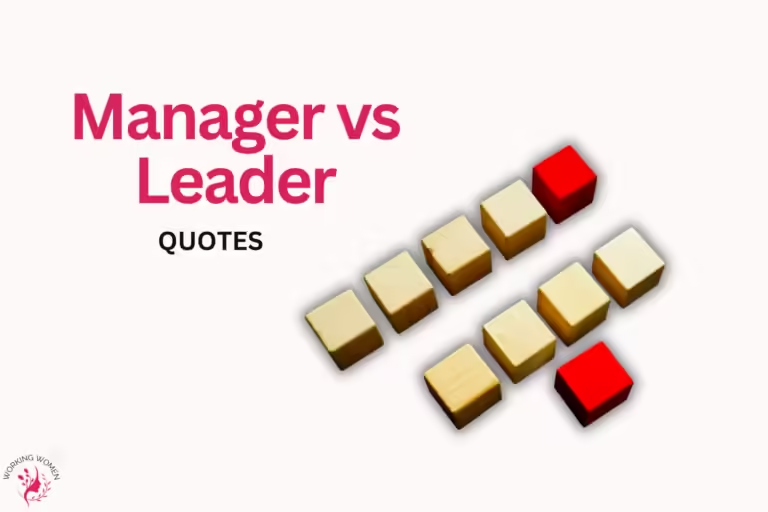Understanding the Laissez-Faire Leadership Style
Micromanagement is out. Inspired by a philosophy dating back to French revolutionaries, laissez-faire leadership sees bosses step back and let their teams take the wheel. This hands-off approach might sound crazy to some, but for others, it’s the key to unlocking innovation, employee satisfaction, and surprising results. Yet, laissez-faire also carries the risk of disorganization and misaligned goals. Trusting your team seems wise, but when does wise become reckless? Laissez-faire leadership explores this delicate balance.
Table of Contents
What is a Laissez Faire Leadership?
Laissez-faire is a French term meaning “let it be” or “let them do”. Laissez-faire leadership style also known as delegative leadership, embodies a philosophy of trust and autonomy.
Unlike micromanaging leaders who dictate every step, laissez-faire leaders hand over significant control to their teams. They believe that talented, motivated employees thrive when given freedom to make decisions, solve problems, and find their own paths to success. While providing support and guidance when necessary, these leaders focus on setting clear goals and empowering their teams to achieve them. This unconventional style has its passionate advocates and critics, making it a fascinating and complex model of leadership.
meaning of laissez faire leadership
Laissez-faire leadership means leaders take a hands-off approach, trusting their team members to make decisions and achieve goals with minimal intervention.
Characteristics of Laissez-Faire Leadership
Here are the key traits of laissez faire leadership style
- Hands-off approach
- Big on trust
- Focus on Goals, not Process
- Delegation Masters
- Support, not control
- Employees are empowered for Decision making
- Problem-solving by employees
- Access to resources and tools
- Leader intervention (when necessary)
- Leader accountability
Laissez Faire Leadership Example
Laissez-faire elements work best with specific tasks or projects, not always as an overall everyday management approach. This style relies heavily on the team’s expertise and ability to self-manage. If the leader is expert enough in people management and knows which person is capable of doing which task (Effective team building) then Laissez-faire leadership style is a blessing otherwise it’s not. Here are some situational examples of this leadership style in different professions
Situational Examples of laissez-faire Leadership
1. Software Development
A team lead in a tech startup might assign a new feature development to experienced programmers. Instead of dictating the coding approach, the leader provides the desired outcome and trusts the team to choose the best technology and methods to deliver.
2. Healthcare
A head nurse in a busy hospital ER might delegate patient triage and initial care to highly trained ER nurses. The head nurse trusts their expertise and focuses on overall resource management and critical cases.
3. Sales
A sales manager might set monthly targets for an experienced sales team and then allow considerable freedom in how they approach client outreach, lead generation, and closing deals. The focus is on results, not daily activitie
4. Academia
Academia: A university professor might design a research project outline for graduate students while giving them leeway in choosing specific research methodology and focus areas. The professor guides by offering feedback and expertise but not by micromanaging every step.
Famous Leaders
Although no Leader has a complete 1 type leadership style. Effective leaders often use mix leadership styles to be more effective and change their approach according to the situation. Here are some examples where famous leaders use this style in particular situations.
1. Warren Buffett
Warren Buffett, the head of Berkshire Hathaway, is famous for letting his people work the way they want. He trusts smart people to do a good job without him always watching them.
This philosophy fosters a culture of ownership and removes unnecessary bureaucracy. Buffett’s keen eye for spotting dedicated leaders who thrive in this environment is key to his strategy. Ultimately, it’s a style built on a foundation of trust and a belief in the power of empowered individuals.
2. Queen Victoria
Queen Victoria’s leadership style possessed a fascinating blend of hands-off and hands-on elements. Becoming queen at just 18, initially relied heavily on trusted advisors to aid in governing. Her focus on improving social conditions led to ambitious projects like voting reform and welfare support.
To implement these changes, queen demonstrated aspects of laissez-faire leadership, delegating significant responsibility to members of her monarchy and Parliament. Her ability to select capable advisors contributed to her success and popularity as a monarch.
3. Steve Jobs
Steve Jobs, renowned for leading Apple’s innovation, embraced a laissez-faire leadership style to foster creativity.
“Hire smart people and let them tell us what to do,” he famously said. By trusting his talented team, Jobs empowered them to take risks, driving the company’s rapid development. However, his strong belief in his employees’ abilities could also lead to a demanding streak when expectations weren’t met.
pros and cons of Laissez Faire Leadership
Lorem ipsum dolor sit amet, consectetur adipiscing elit. Ut elit tellus, luctus nec ullamcorper mattis, pulvinar dapibus leo.
advantage and disadvantage of laissez-faire leadership
Benefits of laissez-faire Leadership
There are many benefits of this leadership style for Employees and Leaders both.
- Higher retention: Employees feel trusted and valued.
- Accountability: Employees take ownership of their work.
- Relaxed company culture: Reduced micromanagement creates a positive atmosphere.
- Creative environment: Encourages innovation and out-of-the-box thinking.
- Motivation for employees: Driven by their ideas and sense of autonomy.
- Faster Decision-making
- Develop Leadership Skills
Disadvantages of laissez-faire Leadership
These disadvantages highlight why laissez-faire leadership is situational. It’s most effective in the right context and with the right kind of team.
Requires Highly Skilled Employees: Inexperienced or unmotivated teams need more guidance to thrive, making this style unsuitable.
Role Ambiguity: Without clear direction, employees might waste time figuring out responsibilities or duplicate work.
Reduced Productivity (Potential): Some may excel with freedom, but others might struggle, affecting the team’s overall output. Researchers have found that this leadership style leads to the lowest productivity among team
Lack of Cohesion: An overly hands-off approach can make the team feel disconnected, lacking a unified sense of purpose.
Leader’s Accountability: Even when delegating, the leader is ultimately responsible for successes and failures.
Potential for Exploitation: Lack of oversight might allow some employees to take advantage, neglecting work or pursuing personal projects.
Conclusion
Laissez-faire leadership is a hands-off style where leaders give their team members a lot of freedom and independence. Instead of micromanaging, these leaders trust their employees’ skills and judgment to get the job done. They set clear goals, then step back and let their team figure out the best way to achieve them. This style works best with experienced, highly-motivated teams and in settings where creativity and outside-the-box thinking are important.
FAQs
In psychology, introspection refers to the deliberate examination of one’s own thoughts, feelings, and sensations. It aims to create direct awareness of the contents of the conscious mind.
Laissez faire leadership style can be good because it empowers employees, making them feel valued and boosting morale. This freedom allows for greater creativity and innovation. It also helps employees develop leadership skills by forcing them to solve problems and take charge. When you have a skilled and motivated team, this hands-off style can lead to faster decision-making and better results.
Here are some famous figures often associated with elements of this approach:
- Warren Buffett: Known for buying well-managed companies and allowing experienced CEOs significant freedom to run their businesses.
- Steve Jobs: While sometimes demanding, Jobs often gave his design and development teams room to experiment and innovate.
- Historical Figures: Some political leaders across history have been labeled laissez-faire for their hands-off approach to economic or social matters. For example, Queen Victoria
Laissez-faire leadership primarily benefits employees who are highly skilled, self-motivated, and thrive on responsibility. It gives them the freedom to make decisions, solve problems independently, and be creative, leading to greater job satisfaction and a sense of ownership. Additionally, companies benefit when this leadership style successfully fosters innovation and faster decision-making processes.






